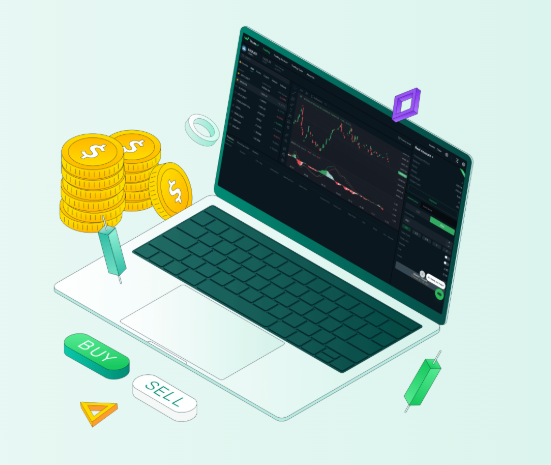How to Trade Tesla and Other Tech Stocks Using CFDs
Investors are captivated by the spectacular growth and high volatility of tech stocks like Tesla, Apple, and Nvidia. But if you're looking to invest in these companies and their stock price moves, the traditionally structured products of the world—equity investments requiring lots of capital and bonds requiring little but giving little—that's what you'd have to rely on. And you'd have to rely on them with inflexibility. At least, you'd have to do so until you discovered the powerful alternative to these products that are Contracts for Difference.
A CFD, or contract for difference, is a financial derivative that enables trading on the price variations of an underlying asset. When you trade a CFD, you're speculating on the price movement of that underlying asset—be it a stock, a commodity, or something else. You don't own the asset itself, so you never take delivery of it; instead, you profit from or lose on the price changes, and you can trade them in both bull and bear markets.
Key Advantages of Trading Tech Stocks via CFDs
Two-Way Trading: In the world of traditional investing, you only make money when the prices go up. But with CFDs, you can also make money when the prices go down. You can predict that the prices will drop, "go short," and sell the CFD before buying it back at a lower price.
Utilization of CFDs to increase returns on investments Capital efficiency: With contracts for difference, you control larger positions using much less capital. For example, with leverage of 10 to 1, you control a $10,000 position in Tesla with just $1,000 of your own capital, which is very efficient. You have freed up your capital to be used in other ways, which in some instances can also be used to generate returns.
Understanding Tesla's Market Behavior
To be effective, traders must grasp the unusual blend of circumstances that produce wild swings in Tesla (TSLA) stock. This is vital knowledge for CFD traders in particular, since they are using leverage to not only increase their potential returns but also to amplify their risk exposure. Understanding why TSLA is so volatile can help both types of traders make better decisions.
The most vital price movers in Tesla are its three-month Earnings Calls and vehicle delivery numbers. When it is reported that Tesla has delivered a number of vehicles that, like, far surpasses what analysts were expecting, we tend to see a pop in Tesla's stock price afterwards (if not immediately). And when it is reported that Tesla has obedience delivery vehicle numbers, akin to what other automakers achieve when they achieve non-catalyst numbers (think: all of 2020), Tesla's stock price kinda also obeys the same non-catalyst principle, despite any institutional desire to sow dissent.
Step-by-Step Guide to Trading Tesla and Tech Stocks with CFDs
Management of Leverage: Using leverage can enhance profits, but using it can be as dangerous as using too many drugs. Some stocks and some periods in the market are more volatile than others (like TSLA right now), so those are periods when you really need to think hard about using leverage. If you do, and you use it on high-vol stocks or when the market is whipsawing (like in 2008 or 2000), don't be surprised if your account gets margin called or if your profit and loss statement looks like a horror show.
Refrain from Trading with Emotions: No matter how strong the impulse, stick to your preset trading plan. Market emotions are not for you to trade with, and fear and greed are indeed your two worst enemies when it comes to trading. They can lead you to make and to reverse decisions you should not be making and should not be reversing. A trading journal can help you see the mistakes more clearly by using the past in conjunction with the present.
Other Popular Tech Stocks You Can Trade via CFDs
Possible Catalysts: Check whether the figure for individualized monthly users is on the upswing or downswing. Is ad revenue heading higher? Is anything happening with virtual or augmented reality that might affect user figures (presumably, for the better)? Could regulatory developments in any number of areas impact these figures in the near term?
You can diversify your risk and reward across various firms and business models in the tech industry by trading their stocks with CFDs. The tech sector is notorious for its up-and-down cycles. Some companies can really elevate your portfolio, while others might be dragging it down.
Final Considerations
While CFDs offer powerful ways to trade technological shares like Tesla, they are also complex tools that carry large associated risks. The leverage that transforms profits into astronomical amounts also transforms losses into such large figures that one's accounts may seem to be in a hole from which no financial recovery is possible.
And then there are the technological stocks themselves—CVS is a lot less volatile than Tesla. If your CFDs are not fully funded with cash, and you are trading in amounts that, to be generous, might best be described as "sizable," your account could very well be wiped out.
For more info:-


Comments
Post a Comment